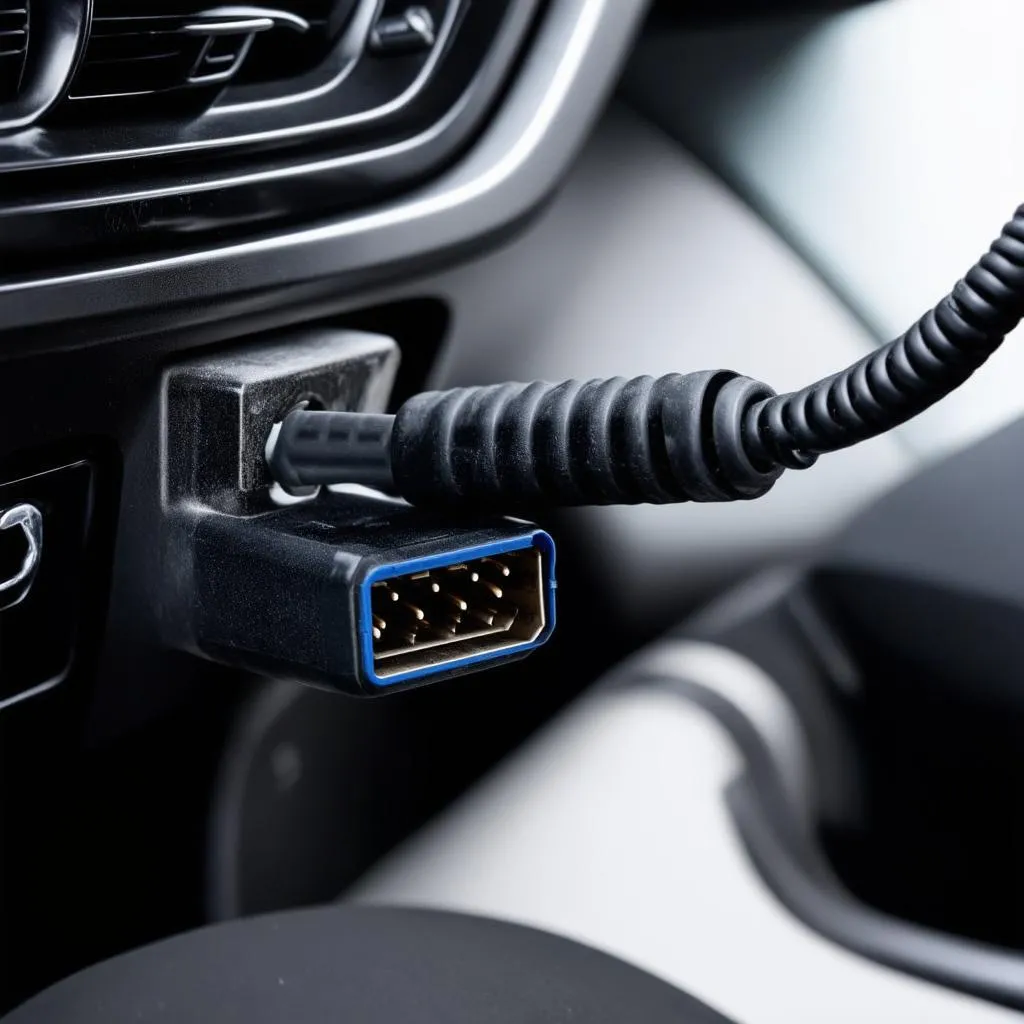“A stitch in time saves nine,” goes the old saying. And in the world of car maintenance, that stitch is often a quick check of the OBD port, the gateway to your car’s electronic health. But what happens when you’re trying to diagnose your car, you plug in your scanner, and… nothing? Could it be a blown fuse?
Understanding the OBD Port and its Importance
The OBD (On-Board Diagnostics) port is a crucial component of modern vehicles, allowing you to access your car’s computer and retrieve diagnostic codes. Imagine it as the window into the inner workings of your car, revealing valuable information about its performance and any potential issues. But like any window, it needs to be powered to work.
Why is the OBD Port Essential?
- Accurate Fault Detection: It allows mechanics and DIY enthusiasts to identify problems like engine misfires, sensor malfunctions, or emissions issues.
- Prevents Costly Repairs: Early identification of problems can save you from costly repairs later.
- Ensures Environmental Compliance: OBD systems monitor emissions, ensuring your car meets environmental regulations.
The Hidden Role of Fuses
Fuses are small, sacrificial components designed to protect your car’s electrical system from damage caused by overloads or short circuits. They act as safety valves, interrupting the flow of electricity when things go wrong. While the OBD port is usually designed to be a safe and reliable component, it still relies on a fuse for protection.
Does The Obd Port Have A Fuse? A Comprehensive Answer
Now, the burning question: Does The Obd Port Have A Fuse? The answer is yes, in most cases. However, the location and type of fuse can vary depending on the make and model of your vehicle.
Think of it like this: Your car’s electrical system is a complex network of pathways. The OBD port sits at a crucial junction, connecting your diagnostics tool to your car’s brain. Just like a house has multiple circuit breakers, your car has multiple fuses protecting different sections of its electrical network.
Here’s why you might need to check the OBD fuse:
- The scanner doesn’t connect: If you plug in your scanner, and it doesn’t light up or recognize your car, the fuse might be blown.
- Intermittent power issues: You might experience a connection that works sometimes but not others.
- Recent modifications: If you’ve recently installed new accessories or done any electrical work, you might have accidentally blown the fuse.
Where to Find the OBD Fuse?
Finding the OBD fuse can be a bit of a treasure hunt. It often hides within the fuse box, which can be located under the dashboard, near the engine bay, or even in the trunk.
Here’s a step-by-step guide:
- Consult your owner’s manual: This is your primary source of information about your car’s fuses.
- Identify the fuse box: Look for a labeled box or a section in your owner’s manual that explains fuse box locations.
- Locate the OBD fuse: Your owner’s manual will specify the exact fuse number or location. Look for a diagram showing the fuse layout.
- Check the fuse: Carefully remove the fuse and examine it. Look for a break in the filament or any signs of melting.
Troubleshooting Your OBD Port Fuse
If you discover a blown fuse, don’t panic! You can easily replace it with a new fuse of the same amperage rating. Here’s a simple process:
- Turn off the ignition: This is crucial for safety.
- Locate the fuse box: Follow the steps mentioned earlier to find the fuse box.
- Remove the blown fuse: Using a fuse puller or pliers, gently remove the blown fuse.
- Install the new fuse: Insert a new fuse of the same amperage rating into the empty slot. Be sure to match the amperage rating, as using a fuse with a different rating can cause more harm.
- Turn the ignition back on: Try plugging in your scanner and check if it works.
Additional Insights and Tips
Consider these factors:
- Fuse Box Organization: The fuse box layout can vary widely. Some cars have a dedicated fuse for the OBD port, while others share a fuse with other components.
- Visual Inspection: While it might seem obvious, visually checking the fuse is essential. A blown fuse often exhibits a visible break in the filament.
- Multiple Fuses: In some cases, the OBD port might rely on multiple fuses, one for power and another for communication.
- Using a Test Light: If you’re unsure about the fuse’s condition, a simple test light can help confirm if there’s power going through it.
 obd-fuse-location
obd-fuse-location
Beyond the Fuse: Additional Troubleshooting
If you’ve checked the fuse and it’s still not working, here are some other factors to consider:
- OBD Port Connectivity: Ensure the OBD port is clean and free of debris.
- Scanner Compatibility: Make sure your scanner is compatible with your car model and year.
- Vehicle Software Issues: Some cars may have software glitches affecting the OBD port. A qualified mechanic can diagnose these issues.
FAQs: Addressing Common Concerns
Q: Can I use a generic OBD fuse?
A: It’s not recommended. Each fuse is designed for a specific amperage rating, and using a fuse with a different rating can lead to electrical problems.
Q: What if I can’t find the OBD fuse?
A: Consult your owner’s manual or a qualified mechanic for assistance. They can help you identify the correct fuse or diagnose any underlying issues.
Q: Is it safe to replace a fuse myself?
A: Replacing a fuse is generally safe if you follow proper procedures and use the correct replacement fuse. However, if you’re uncomfortable with electrical work, it’s best to consult a professional.
Q: Can I diagnose my car’s problems myself?
A: While a basic understanding of the OBD system is helpful, diagnosing car problems can be complex. Consulting a qualified mechanic is recommended for most issues.
Additional Resources
For more information on OBD systems, you can explore these resources:
- TechCarUSA: https://techcarusa.com/honda-civic-2002-obd-location/
- TechCarUSA: https://techcarusa.com/2008-gmc-acadia-obd-port-has-no-power/
- TechCarUSA: https://techcarusa.com/b1634-obd-code/
 obd-port-connector
obd-port-connector
Connect with Us for Expert Support
If you need assistance with diagnosing your car or need help with your OBD diagnostics tools, our team of experts is here to help. Contact us via Whatsapp at +84767531508 for 24/7 support.
Conclusion
Understanding the OBD port and its fuse is essential for keeping your car running smoothly. By checking the fuse and understanding the potential causes of OBD port issues, you can take control of your car’s health and avoid costly repairs down the line. Remember, preventative maintenance is key to keeping your car running like a well-oiled machine, and that often starts with a simple check of the OBD fuse!
We encourage you to share your experiences with the OBD port and any troubleshooting tips you’ve discovered. Let’s help each other keep our cars on the road!